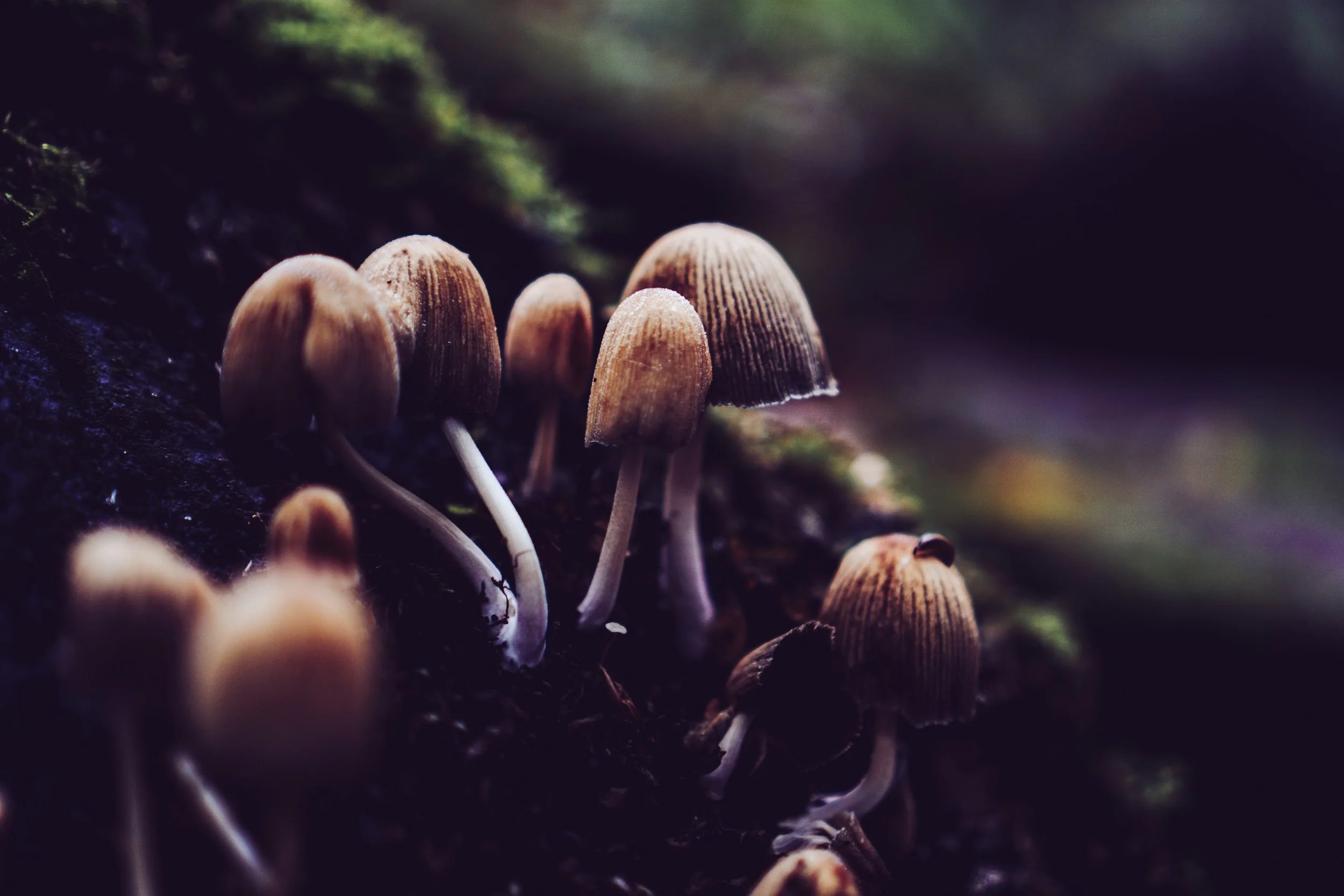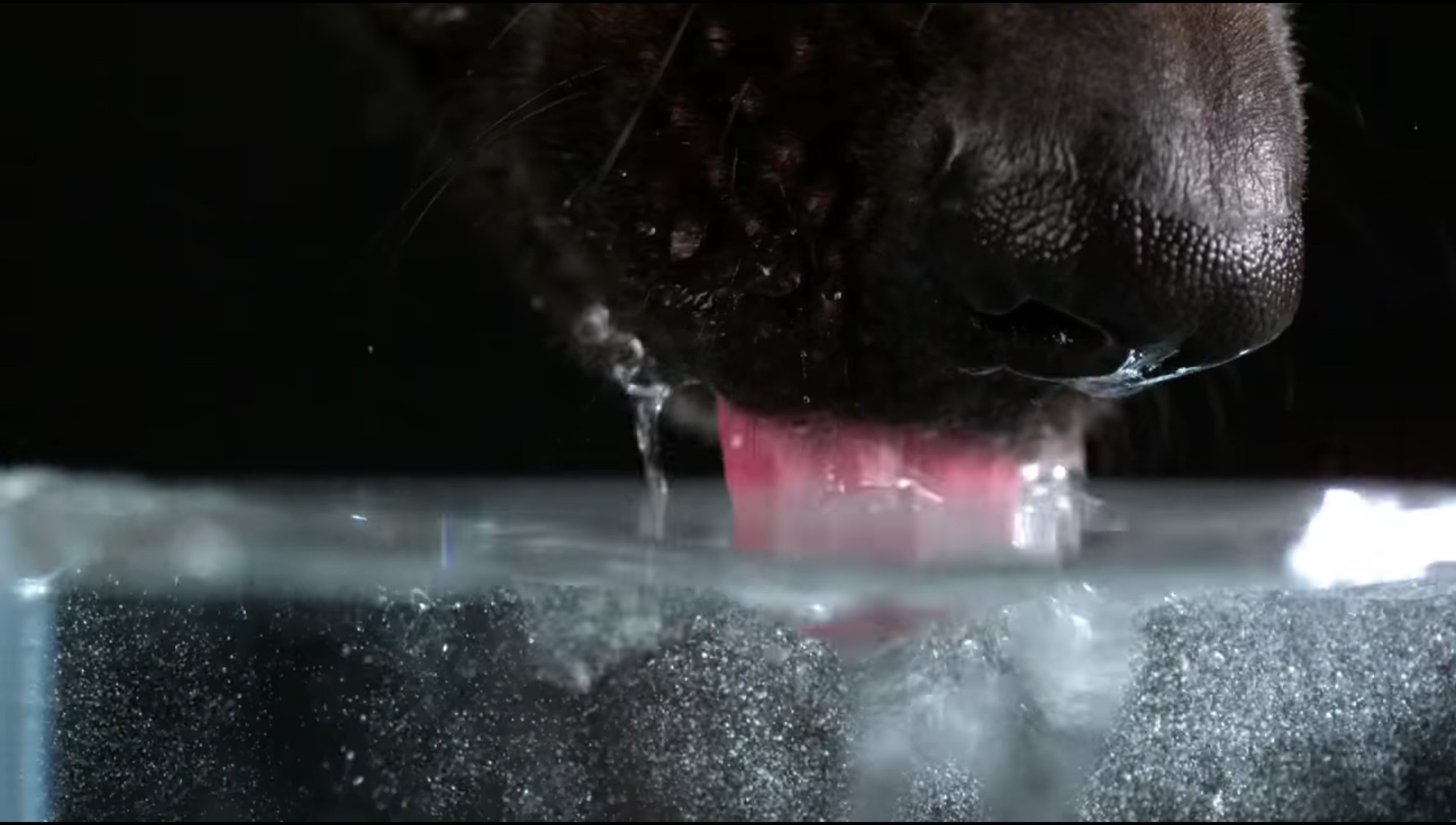Delicious, vegan recipe for a healthy and filling breakfast.
What Would Earth Be Like With Zero Oxygen Levels?
Butternut, Sweet Potato and Red Lentil Stew
Mycelium - The Future is Fungi
Grounding Tip from Deborah Hoeks
Basic Porridge Recipe
Ancient Trees: This Woman Spent 14 Years Photographing The World’s Oldest Trees
Seasonal Ceremonies ๑ Samhain: All Hallows Eve
Energy Tip from Cristina Repas
Thai Roasted Butternut Squash and Coconut Soup
Motivation Tip from Fritzi Ponse
Crispy Tofu Bowl
Oatmeal Smoothie
Studies have found that meals with high-protein content increase satiety. This delicious smoothie has got you covered with 25 grams of protein! The smoothie also contains rolled oats, which are low on the glycemic index. This will keep your blood sugar levels steady and leave you feeling energized until lunch.
Happiness Tip from Ike Dielesen
Indian Dahl
Carrot Cake Bliss Balls
Carrot Cake Bliss Balls
Ingredients:
- 3 CUPS (360G) PECANS
- 20 FRESH PITTED DATES
- 2 CARROTS (160G), PEELED AND GRATED
- 1 TEASPOON GROUND CINNAMON
- ½ TEASPOON GROUND NUTMEG
- ½ TEASPOON GROUND GINGER
- 1⅓ CUPS (130G) LSA MIX+
Recipe
- Place 1 cup (120g) of the pecans in a food processor and pulse until finely chopped. Place in a small bowl and set aside.
- Place the dates, carrot, cinnamon, nutmeg, ginger, LSA mix and remaining pecans in the food processor and process for 1–2 minutes or until the mixture comes together.
- Roll tablespoons of the mixture into balls and roll in the chopped pecan to coat. Makes 28.
+ LSA is a mixture of ground linseeds, sunflower seeds and almonds. Find it in the health food aisle of the supermarket. Tip: The bliss balls will keep refrigerated for 2–3 weeks.
Relaxation Tip from Suze Retera
Starting your Monday on a positive note!
Relaxation tip from Suze Retera
Do you find it hard to make self care a part of your daily live? Sometimes it seems harder than it really is. When you are leading a busy life, self care is extra important. But when it becomes another thing on your to do list, it might give more stress than care.
The trick is to keep it simple, short and consistent. I will share my favourite and simple self care exercises with you:
Taking a 1 minute break to take 5 deep and slow breaths with your eyes closed is already a great way to take care of yourself and calm your nervous system. It can be dome any time, anywhere. Do this a few times a day and increase to 5 minutes of slow deep breathing if you have the time.
Take 10-15 minutes when you come home or just before you go to bed to lay down in a comfortable position, possibly making use of props, and relax in savasana or listen to a yoga nidra recording. This will help you release the activities of the day and sets the tone for a good night sleep.
Suze Retera teaches a Masterclass on a Saturday once a month, Slow Flow on Tuesday from 18:45-20:00 & Sunday from 10:30-12:00 and Vinyasa on Sunday from 9:00-10:15.
Veggie Burgers With Cilantro Lime Tahini Sauce
Veggie Burgers With Cilantro Lime Tahini Sauce
Ingredients:
FOR THE BURGERS:
- 1.5 cups grated yam (I used a sweet potato in a pinch)
- 2 large garlic cloves, peeled
- 3/4 cup fresh cilantro leaves
- 1 small piece of fresh ginger (1 cm cube), peeled
- 1 (15-ounce) can chickpeas, drained and rinsed (about 1.5 cups)
- 2 tablespoons ground flax mixed with 3 tablespoons water
- 3/4 cup rolled oats, ground into a flour (use gluten-free if necessary)
- 1/2 tablespoon sesame oil
- 1 tablespoon coconut aminos or low-sodium tamari
- 1/2-3/4 teaspoon fine grain sea salt or pink Himalayan salt, to taste
- Freshly ground black pepper, to taste
- 1 1/2 teaspoons chili powder
- 1 teaspoon cumin
- 1/2 teaspoon coriander
- 1/4 teaspoon cinnamon
- 1/4 teaspoon turmeric
FOR THE CILANTRO-LIME TAHINI SAUCE (makes 1/2 cup):
- 1 small garlic clove, peeled
- 2/3 cup fresh cilantro leaves
- 1/4 cup extra virgin olive oil
- 3 tablespoons fresh lime juice, or to taste
- 2 tablespoons tahini
- 2 tablespoons water
- 1/2 teaspoon cumin
- salt and pepper, to taste
Recipe
- FOR THE BURGERS: Preheat the oven to 350F. Line a large baking sheet with a piece of parchment paper.
- Peel the yam. Using the regular-sized grate hole, grate the yam until you have 1 1/2 lightly packed cups. I used the grater attachment disc in my food processor to save time (it takes less than 20 seconds). Place into large bowl.
- Remove grater attachment from food processor, and add the regular "s" blade. Mince the garlic, cilantro, and ginger until finely chopped.
- Add drained chickpeas and process again until finely chopped, but leave some texture. Scoop this mixture into a large bowl.
- In a small bowl, stir together the flax and water mixture.
- Grind the oats into a flour using a blender or a food processor. Or you can use 3/4 cup + 1 tablespoon pre-ground oat flour. Stir this into the mixture along with the flax mixture.
- Now stir in the oil, aminos/tamari, salt/pepper, and spices until thoroughly combined. Adjust to taste if desired.
- Shape 6-8 patties, packing the mixture firmly together. Place on baking sheet. Bake for 15 minutes, then carefully flip, and bake for another 18-23 minutes until golden and firm. Cool on pan.
- FOR THE CILANTRO SAUCE: Mince garlic in a food processor, followed by the cilantro. Add the rest of the sauce ingredients and process until smooth and creamy.
- Serve the patties with a generous dollop of sauce and optional homemade salsa (from OSG cookbook, p.95) with a bun or lettuce wrap.
Octopus And Squid Evolution Is Officially Weirder Than We Could Have Ever Imagined
Octopus And Squid Evolution Is Officially Weirder Than We Could Have Ever Imagined
They edit their own genes!
Just when we thought octopuses couldn't be any weirder, it turns out that they and their cephalopod brethren evolve differently from nearly every other organism on the planet.
In a surprising twist, scientists have discovered that octopuses, along with some squid and cuttlefish species, routinely edit their RNA (ribonucleic acid) sequences to adapt to their environment.
This is weird because that's really not how adaptations usually happen in multicellular animals. When an organism changes in some fundamental way, it typically starts with a genetic mutation - a change to the DNA.
Those genetic changes are then translated into action by DNA's molecular sidekick, RNA. You can think of DNA instructions as a recipe, while RNA is the chef that orchestrates the cooking in the kitchen of each cell, producing necessary proteins that keep the whole organism going.
But RNA doesn't just blindly execute instructions - occasionally it improvises with some of the ingredients, changing which proteins are produced in the cell in a rare process called RNA editing.
When such an edit happens, it can change how the proteins work, allowing the organism to fine-tune its genetic information without actually undergoing any genetic mutations. But most organisms don't really bother with this method, as it's messy and causes problems more often that solving them.
"The consensus among folks who study such things is Mother Nature gave RNA editing a try, found it wanting, and largely abandoned it," Anna Vlasits reports forWired.
But now it looks like cephalopods didn't get the memo.
In 2015, researchers discovered that the common squid has edited more than 60 percent of RNA in its nervous system. Those edits essentially changed its brain physiology, presumably to adapt to various temperature conditions in the ocean.
Now the team is back with an even more startling finding - at least two species of octopus and one cuttlefish do the same thing on a regular basis. To draw evolutionary comparisons, they also looked at a nautilus and a gastropod slug, and found their RNA-editing prowess to be lacking.
"This shows that high levels of RNA editing is not generally a molluscan thing; it's an invention of the coleoid cephalopods," says co-lead researcher, Joshua Rosenthal of the US Marine Biological Laboratory.
The researchers analysed hundreds of thousands of RNA recording sites in these animals, who belong to the coleoid subclass of cephalopods. They found that clever RNA editing was especially common in the coleoid nervous system.
"I wonder if it has to do with their extremely developed brains," geneticist Kazuko Nishikura from the US Wistar Institute, who wasn't involved in the study, told Ed Yong at The Atlantic.
It's true that coleoid cephalopods are exceptionally intelligent. There are countless riveting octopus escape artist stories out there, not to mention evidence of tool use, and that one eight-armed guy at a New Zealand aquarium who learned to photograph people. (Yes, really.)
So it's certainly a compelling hypothesis that octopus smarts might come from their unconventionally high reliance on RNA edits to keep the brain going.
"There is something fundamentally different going on in these cephalopods," says Rosenthal.
But it's not just that these animals are adept at fixing up their RNA as needed - the team found that this ability came with a distinct evolutionary tradeoff, which sets them apart from the rest of the animal world.
In terms of run-of-the-mill genomic evolution (the one that uses genetic mutations, as mentioned above), coleoids have been evolving really, really slowly. The researchers think that this has been a necessary sacrifice - if you find a mechanism that helps you survive, just keep using it.
"The conclusion here is that in order to maintain this flexibility to edit RNA, the coleoids have had to give up the ability to evolve in the surrounding regions - a lot," says Rosenthal.
As the next step, the team will now be developing genetic models of cephalopods so they can trace how and when this RNA editing kicks in.
"It could be something as simple as temperature changes or as complicated as experience, a form of memory," says Rosenthal.
The findings have been published in Cell.
Article comes from Science Alert
Octopuses are incredibly smart!
Balance Tip from Ramon Kinkel
Starting your Moday on a positive note!
Balance Tip from Ramon Kinkel
Pose: Anuloma Vuloma (or Alternate Nostril Breathing). A powerful pranayama to re-balance the energies in your body and start the week with a sharp focus!
The Right nostril is called Pingala Nadi (sun principle or the body) ,the left nostril represents Ida Nadi (moon principle or the mind). In alternate nostril breathing, one inhales through right and exhales through left, then inhales through left and exhales through right. This purifies the Ida and the Pingala Nadis. This purification brings balance to body and mind. Metabolic processes will be balanced.
The purpose of the Alternate Nostril Breathing is to balance the physical energy and the mental energy. It is recommended for all types of problems. As Hatha Yoga principle says that the health conditions are due to imbalance between this Ida and Pingala. Alternate Nostril Breathing balances this two forces.
Benefits of the exercise are:
Excellent breathing technique to calm and center the mind.
Our mind has a tendency to keep regretting or glorifying the past and getting anxious about the future. Nadi Shodhan pranayama helps to bring the mind back to the present moment.
Works therapeutically for most circulatory and respiratory problems.
Releases accumulated stress in the mind and body effectively and helps relax.
Helps harmonize the left and right hemispheres of the brain, which correlate to the logical and emotional sides of our personality.
Helps purify and balance the nadis - the subtle energy channels, thereby ensuring smooth flow of prana (life force) through the body.
Maintains body temperature.
Ramon Kinkel teaches Traditional Hatha Yoga every Monday from 18:30-19:45. You can also join him once a month from 20:00-21:45 at the special Yoga & Pranayama class.

































Its aroma is irresistible. So many people cannot imagine starting a day without it. Is coffee flawless in its perfection? Like a modern-day beverage of the Gods... or should we consume it mindfully?